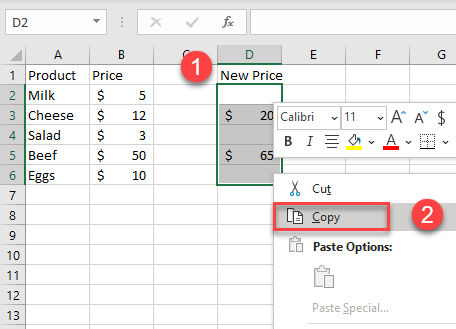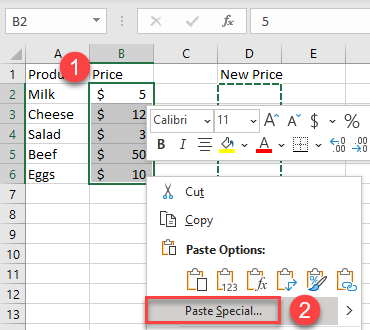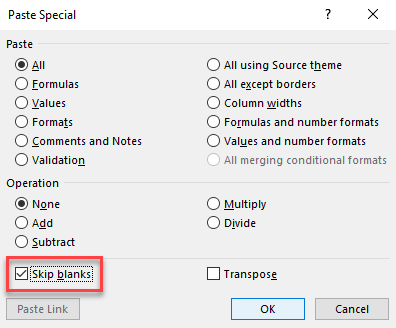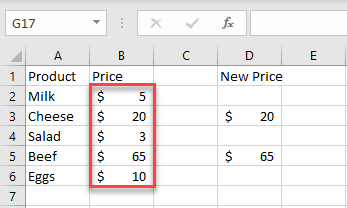How to Copy & Paste Non-Blank Cells (Skip Blanks) in Excel
Written by
Reviewed by
Last updated on November 30, 2023
This tutorial demonstrates how to copy and paste only populated cells, skipping blanks, in Excel.

Excel Paste and Skip Blanks Shortcut
Paste & Skip Blanks
This Excel shortcut pastes and skips blanks.
PC Shortcut:Ctrl+Alt+V>B>Enter
Mac Shortcut:⌃+⌘+V>⌘+B>return
Remember this shortcut:
CTRL+ V is the usual command to paste. Simply add ALT for Paste Special and use B for Skip Blanks.
Alternatively, you can use ALT + E > S > B . Remember, ALT is the command to activate the Ribbon. E for Paste, S for Special, and B for Skip Blanks.
CTRL+ V is the usual command to paste. Simply add ALT for Paste Special and use B for Skip Blanks.
Alternatively, you can use ALT + E > S > B . Remember, ALT is the command to activate the Ribbon. E for Paste, S for Special, and B for Skip Blanks.
Copy and Paste Non-Blanks Only
If you need to copy and paste a data range and don’t want to overwrite existing values in the destination with blanks, you can use Paste Special – Skip Blanks.
- First, select the data range you want to copy (in this example D2:D6), right-click on it, and choose Copy (or use the CTRL + C shortcut).

- Then, select the location where you want to paste the chosen data range. Right-click and, under Paste Options, choose Paste Special.

- This brings up the Paste Special window. In it, check the Skip blanks option and click OK.

As a result, only the cells with data are pasted, and the blanks from the selected data range won’t overwrite the existing values. In this example, only cells D3 and D5 are pasted into cells B3 and B5; B2, B4, and B6 remain the same.

Tip: Also check out VBA Value Paste and Paste Special.

